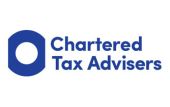
The motive test in Osmond & Allen in the First-tier Tribunal
Key points
- Osmond and Allen is a case about the transactions in securities rules.
- This first part of the article deals with the decision in respect of the motive test.
- The main purpose test was designed to prevent commercial transactions being caught by anti-avoidance rules.
- Messrs Allen and Osmond needed to persuade the judges that their main purposes for entering into the transactions in securities were not wholly or mainly about income tax.
- HMRC has almost never challenged the winding up of a company under the transactions in securities rules.
- The tribunal’s view appears to be that, if a transaction is being carried out for capital gains tax purposes and it is inevitable that there will be an income tax advantage, as defined, the transactions in securities rules must apply.
The recent decision in Osmond and Allen (TC9163) has generated a great deal of interest in the tax press. The case was about the transactions in securities rules and the judgment is quite long and relatively complex, although generally admirably clear, so I wanted to make sure I had understood it as completely as possible before writing about it (or at least, that’s the excuse that I gave to the editors of Taxation).
This article is in two parts. The first deals with the decision in respect of the motive test which, while being specific to this particular case, leads to some more general concerns. Also, it was only this element of the decision for which leave to appeal was sought, and granted, so we won’t see any challenge against the other elements of the judgment anytime soon. This is a pity, as one of the other elements of the judgment – the time limit for raising the counteraction assessments – is a common feature of a number of cases that were stayed behind this one. Assuming that, at least, some of the affected taxpayers will want to continue their appeals, we will have to wait some time for another case to come before the FTT on this point.
Background
Mr Osmond and Mr Allen held shares that were subject to enterprise investment scheme (EIS) relief, so that if the shares were disposed of for capital gains tax purposes, no capital gains tax would arise on the disposal. The nominal value of the shares they held had been enhanced by previous share exchanges that had been carried out for wholly commercial purposes (a fact pattern that is common to many of the cases stayed behind this one). During 2013, and again in March 2015, both of the appellants entered into share buybacks. It’s not clear from the case report why the 2013 buybacks were not challenged by HMRC, but the buybacks of March 2015 (£11m to Mr Osmond and £9m to Mr Allen) were challenged by HMRC under the transactions in securities rules.
These rules are, fundamentally, designed to prevent the extraction of a company’s profits in a way that income tax is avoided. This is achieved by a motive test which asks whether one of the main purposes of the person in being a party to the transaction was the obtaining of an income tax advantage (ITA 2007, s 684(1)(c)). (This provision has been amended for transactions in securities completing on or after 6 April 2016 to refer to the main purpose of the transactions, themselves. But this change does not affect the concerns raised by this case.)
The main purpose test was designed to prevent commercial transactions being caught by these anti-avoidance rules. The intention was that, if the transaction were wholly or mainly commercial, an income tax advantage would generally not be one of the main purposes of the transactions, so the rules would not apply. In fact, until 2010 there was also a commercial purpose test, but the repeal of this test means that taxpayers in theory only have to show that their purposes did not relate wholly or mainly to income tax in order to escape these provisions.
The 2010 changes to the regime also introduced a definition of the income tax advantage (ITA 2007, s 687). Essentially, the legislation requires us to compare a lawful dividend of an amount equal to the consideration received in the transaction that actually took place (limited, if appropriate, to the distributable reserves of the company and its subsidiaries), with the capital gains tax actually paid on the transaction. If the income tax is the larger, there is, by definition, an income tax advantage. HMRC is then entitled to counteract the income tax advantage by assessing income tax to the extent that it exceeds any capital gains tax paid.
So, the first part of the case required Messrs Allen and Osmond to persuade the judges that their main purposes for entering into the transactions in securities were not wholly or mainly about income tax.
The motive test – argument 1
HMRC put forward two sets of arguments on this point. Their first – and successful – argument was based on the fact that the only reason that Mr Osmond and Mr Allen entered into the share buybacks in 2015 was to protect the EIS position, ie to take the profits of the shares free of capital gains tax, as they were concerned at the time that the relief might be abolished. Clearly, if the buyback of shares was a capital transaction, it was an inevitable consequence of this that an income tax advantage, as defined, would arise. Had the appellants received dividends of the same amounts, substantial sums of income tax would have been payable, in contrast to no tax being payable on the share buybacks.
HMRC’s position was that if the transaction has a main purpose that inevitably leads to an income tax advantage, then the income tax advantage must be one of the main purposes of the transaction, as a direct consequence of a main purpose being to crystallise a capital gain. It does not require the shareholders to have chosen between alternative transactions, one of which carries an income tax charge and the other of which does not; the main purpose of obtaining an income tax advantage simply arises from the fact that there was a main purpose of doing something that fell within the definition of an income tax advantage.
Personally, I find this a circular argument and the judges, themselves, said that it caused them to raise an eyebrow (I’m not sure whether each of the two judges raised an eyebrow or just one of them raise one eyebrow, but it probably doesn’t matter). My view, which I believe is shared by Keith Gordon (who acted for the appellants in this case), is that this elides two provisions in a way that cannot have been intended by parliament. As Keith pointed out in arguments, this would inevitably bring into the scope of the transactions in securities rules ordinary commercial transactions that parliament cannot have intended to catch.
A simple example is a person who has a company ripe with distributable reserves, perhaps after selling the trade. The shareholder can decide either to wind up the company and take the distributions in the winding up as capital sums, or they could decide to take a dividend from the company, on which they will suffer income tax, and then put the company into liquidation. The first path is the one that will almost invariably be chosen, simply because the rate of capital gains tax on the proceeds distributed in the winding will be substantially less than the amount of income tax that would be paid on a pre-liquidation dividend. On the argument put forward by HMRC, choosing to put the company into liquidation instead of taking a pre-liquidation dividend would inevitably lead to an income tax advantage, as defined, and would mean that one of the main purposes of carrying things out in this way would be the obtaining of an income tax advantage, so the transactions in securities rules would be applicable.
Having worked in this area for something over 30 years, in my experience HMRC has almost never challenged the winding up of a company under the transactions in securities rules simply because this decision was made. In a case like this, business asset relief would become redundant, as HMRC would apply the transactions in securities rules and charge income tax, instead. (Worse still, the vendor would have used up all or part of their lifetime BADR allowance with no benefit accruing, as the transactions in securities rules require HMRC to assess to income tax only the difference between any capital gains tax paid and the income tax that would have been charged on a distribution.)
Another analogy that sprang to mind is a little more mundane, but also, I feel, relevant: suppose one evening I am going out to dinner, and I have to decide between having an Indian meal or a Chinese meal. The inevitable consequence of deciding to have an Indian meal is that I will not have a Chinese meal. But have I inevitably chosen not to have a Chinese meal if I have decided that this evening I fancy an Indian meal? I believe the answer is no. I have simply exercised a positive choice in favour of one option, I haven’t specifically and with an equal level of purpose, discarded the other option.
As Keith pointed out in his arguments, one of the best-known tax cases relating to the transactions in securities rules is Brebner 43 TC 705, from which we have the helpful statement from Lord Upjohn in the House of Lords, that:
‘when the question of carrying out a genuine commercial transaction, as this was, is considered, the fact that there are two ways of carrying it out – one by paying the maximum amount of tax, the other by paying no, or much less, tax – it would be quite wrong as a necessary consequence to draw the inference that in adopting the latter course one of the main objects is, for the purposes of the section, avoidance of tax. No commercial man in his senses is going to carry out commercial transactions except upon the footing of paying the smallest amount of tax involved.’
Brebner also explicitly distinguished between the purpose of the transaction, which in that case was to generate funds to repay a bank loan, and its effect, which happened to be an income tax advantage. Similarly, in the current case, my view is that HMRC, and the tribunal, have confused the purpose, which was the obtaining of a capital gains tax advantage under the EIS rules, with one of the effects, which happens to be in income tax advantage. What is particularly interesting in this context is that, when discussing HMRC’s second argument on the motive test, the judges said that the income tax advantage ‘was not a main purpose of entering into the share buyback. It was a consequence of so doing’. This seems to entirely contradict the ratio for the decision in this first part of the decision!
As a further thought, cases like New Angel Court v Adam 76 TC 9 and Reed v Nova Securities 59 TC 516 are authorities for the view that accessing reliefs created by parliament is not tax avoidance: ‘… the Revenue cannot complain if the taxpayer makes use of an opportunity provided by parliament’ (Lord Templeman in Nova Securities). While the transactions in securities rules refer to an income tax advantage, rather than avoidance, it is clear from the history of the rules, and judicial comments in previous cases, that there has to be a flavour of avoidance for the legislation to bite (see for example, Lord Reed in CIR v Greenberg 47 TC 240). My view is that the fact that the appellants in this case chose to take advantage of the ability to cash in their shares without a tax bill is simply taking advantage of an opportunity afforded by parliament and it must be at least arguable that this is an inoffensive position and that an anti-avoidance provision such as the transactions in securities rules should not be in play.
The decision of the tribunal on this point was in favour of HMRC, to the surprise of many. The tribunal had found as a fact that a main purpose of the share buybacks was to enable the appellants to take the EIS disposal relief. The FTT’s view was, therefore, that ‘as a matter of remorseless statutory logic’ a main purpose was also to obtain an income tax advantage. In response to the argument that this would bring many more taxpayers within the scope of the transactions in securities rules than was intended by parliament, the tribunal said that ‘it is unsurprising to us that where someone has, as a main purpose of entering into a transaction, the obtaining of the CGT benefit, that person is potentially within the ambit of the TIS regime’ and that where there is ‘a main purpose of obtaining a CGT benefit or advantage, we cannot see anything absurd about the legislation applying’.
Thus, the tribunal’s view appears to be that, if a transaction is being carried out for capital gains tax purposes and it is inevitable that there will be an income tax advantage, as defined, the transactions in securities rules must apply, as there is a main purpose of obtaining that income tax advantage. What worries me, and others, if this view were upheld, is that it is difficult to conceive of scenarios involving share cancellations or buy-backs, or even liquidations, where the transactions in securities rules would not apply.
Overall, I and other observers consider this element of the decision to be wrong, for the reasons that have already been discussed.
The motive test – argument 2
The second argument from HMRC was that, in fact, Messrs Osmond and Allen did also overtly have an intention to obtain an income tax advantage. Returning to the restaurant analogy, this would be akin to actively deciding not to eat Chinese, when deciding to choose Indian food.
HMRC noted that the buyback was calculated to return only the capital underlying the shares that were cancelled, and no more, as any excess would have constituted a distribution for income tax purposes. The implication was that the possible income tax cost was therefore a major factor in the way that the transaction was structured.
Also, the fact that the appellants did not consider taking dividends, rather than a buy-back, was considered unsurprising by HMRC, as the appellants ‘had known for years’ that dividends would be charged to income tax. So, one of the reasons for the share buy-back, apart from obtaining EIS relief, was ‘to avoid paying income tax on any sums received in respect of their shares’. Whether this was a conscious decision, or one based on an unconscious understanding of the tax system, was considered irrelevant by HMRC. Counsel for HMRC said, ‘the fact that they have not even thought about taking a dividend was because of that historical knowledge’, although this statement seems somewhat at odds with the argument that there had been a conscious decision not to trigger an income tax liability.
The appellants’ argument was that they never considered taking a dividend and that they ‘were sitting on piles of cash’ and didn’t want or need to extract any more cash from the company. So, there was ‘no conscious thought’ of taking dividends; all they wanted was to bank the EIS relief. In short, if there was no conscious thought about something, how can that thing comprise a main purpose?
The tribunal agreed with the appellants and said that they had not chosen between alternative mechanisms to extract funds from the company. The fact that they were conscious of the alternative of taking dividends was not ‘evidence from which we can infer that the appellants had as a main purpose the obtaining of an income tax advantage’.
The tribunal also said that HMRC appeared to have ‘looked around to see what alternative transactions might be (a qualifying distribution) and said that that is evidence that the appellants had a tax avoidance motive’, an approach which the judges did not accept. In contrast, they accepted Mr Allen’s evidence that to extract money that he did not need from the company in a tax inefficient way – such as a dividend or a bonus – ‘would have been bonkers’! The FTT said: ‘We cannot infer from the appellants structuring of the transactions as a capital transaction that they had a main purpose of obtaining an income tax advantage when entering into that transaction.’
While HMRC argued that the fact that the appellants did not in fact need the money and did not want to extract money from the company, was not relevant, the tribunal considered it to be ‘highly significant’. This is congruent with the FTT decision in Assem Allam (TC7702), where part of the ratio for the tribunal finding in favour of Dr Allam was that the company already paid him substantial dividends and that he had no need for further cash: ‘The other surrounding circumstances do not support the inference that Dr Allam was seeking to obtain an income tax advantage: he received significant dividends from the companies in the tax year in question.’
On HMRC’s alternative argument, the tribunal found in favour of the appellants.
This is significant, as these arguments are more in line with what we would expect on the motive test in transactions in securities cases, and the appellants were found not to have had a main purpose of not generating an income tax charge (with apologies for the double negative).
The tribunal found for HMRC in respect of the motive test simply on the basis that the income tax advantage was an inevitable consequence of the stated main purpose of the transactions, which was to obtain a capital gains tax advantage. If, as many of us believe, this is an incorrect decision, the fact that the tribunal found against HMRC on the more standard approach to the motive test should count in the appellants’ favour when the case goes to the Upper Tribunal. I say ‘when’, because I have been informed that permission to appeal has been given but that the appeal is only on the application of the motive test, not on the other three grounds that were considered by the FTT. If the UT reverses the decision of the FTT on HMRC’s first argument, it also seems unlikely that the UT would reverse the decision in favour of the appellants on HMRC’s second argument, as these are findings of fact and HMRC would have to show that those findings were perverse on the basis of the evidence submitted (as established in the case of Edwards v Bairstow and Harrison 36 TC 207).
Motive test and need for an alternative transaction
There were some interesting observations about the need to identify an alternative transaction that would have carried an income tax charge, in determining whether there is a purpose of obtaining an income tax advantage. It is (or should be) a given that the transactions in securities rules can potentially apply only if there is an alternative transaction to that which was carried out, which would give the same commercial result and would be a dividend or other distribution, after which it is necessary to determine whether avoiding that alternative transaction was one of the main purposes of the transaction. This case was slightly different!
HMRC’s main argument on the motive test was based on the inevitability of the income tax advantage arising out of the desire to trigger a non-chargeable capital gain. Implicitly, this argument does not require an alternative transaction to exist or to have been considered; it is simply based on the statutory definition of an income tax advantage. (This is somewhat ironic because, when the definition was introduced in 2010, many of us thought it would reduce the uncertainty over what a tax advantage was, which had existed for 50 years.) The tribunal agreed with HMRC that there does not need to be a ‘consciously considered comparable transaction” as “the alternative transaction is already built into the definition of income tax advantage … The legislation itself identifies the alternative transaction which would incur an income tax cost’.
The arguments concentrated on the inevitability of an income tax advantage if the main purpose of the transaction was to obtain a capital gains tax advantage, but I think the implications of this part of the decision go further than that. On the basis of what the tribunal referred to as a ‘remorseless statutory logic’, any transaction specifically structured in a way that means that the shareholders receive sums that are not subject to income tax on dividends – such as an arm’s length sale of shares to a third party – can be said to have obtained an income tax advantage, as defined. Since that advantage is an inevitable consequence of the disposal, and the disposal is the main purpose of the transaction, it follows from the decision here that the income tax advantage must also be a main purpose of the disposal.
In contrast, the discussion in HMRC’s second argument was more conventional. HMRC cited Trevor Lloyd [2008] STC (SCD) 681, where Mr Lloyd sold the shares of one company he controlled to another, Holdings, in return for cash. The special commissioner found that this could have been achieved by a share exchange, whereby Mr Lloyd would not have obtained an income tax advantage, as he would not have received any cash. So, it was clear that, regardless of the commercial drivers, the deal was structured to give him cash subject to capital gains tax, rather than dividends. Hence, the finding was that a main purpose of the transaction was to obtain an income tax advantage.
However, Mr Osmond and Mr Allen could not achieve their commercial aim – an actual disposal of shares to trigger EIS relief – by taking a dividend. So ‘there could not realistically have been an alternative transaction which would have achieved the same object’, and the income tax advantage was simply a consequence of the transaction, not a purpose.
The motive test – conclusions and further thoughts
As already noted, the legislation at the time that Mr Osmond and Mr Allen entered into the transactions looked at the main purpose of each of them being a party to the transactions in securities. The test was changed, with effect from 6 April 2016, to asking about the main purpose of the transactions in securities themselves, rather than the motives of the individuals concerned. This has a real, if subtle, effect on the overall application of the transactions in securities rules in some cases, but in this case I believe that the main purpose of the transactions in securities is the same as the main purpose of the shareholders in being parties to those transactions, so that the effect of this decision would apply to transactions in securities under the new rules, as well. Therefore, the concerns expressed in this article remain largely valid, notwithstanding the change in the legislation.
The big concern is that the decision of the FTT on the motive test would essentially mean that the transactions in securities regime has a far wider application than has been appreciated by taxpayers, advisers or, presumably, even the Inland Revenue and HMRC in the 64 years that the legislation has been in existence.
Most of the cases stayed behind this one also involved reductions of capital, with a variety of reasons. Some had genuine commercial reasons for reducing the capital of the company, for example in order to weaken the balance sheet to dissuade potential litigants in some of the more litigious areas of commerce, to disguise a company’s level of success, or to make it easier for key employees to subscribe for shares. In those cases, the strong commercial reasons for reducing the capital are intended to demonstrate that the income tax advantage was not a main purpose of the transactions.
In all of these cases, one could argue that the balance sheet could be weakened by simply paying dividends to shareholders. But, as in this case, it would be bonkers to pay a dividend (or a bonus, as mentioned by Mr Allen in his evidence) to reduce the value of the balance sheet, because of the income tax cost, in contrast to a simple reduction of capital.
However, on the basis of this decision, whatever the commercial drivers, the inevitable result of the transactions that were carried out was that there was an income tax advantage, as defined by the legislation. Therefore, all of these cases must fail if the ratio of the decision against the taxpayers in this case were to be upheld.
There are, of course, other cases where it seems clear that the taxpayers were simply trying to get cash out of their companies at capital gains tax rates. In those cases, I would agree that one of the main purposes was obtaining an income tax advantage, so the only arguments taxpayers would have in those cases would be based on whether the assessments were raised on time. We will discuss that point in more detail in the next article, so watch this space.








